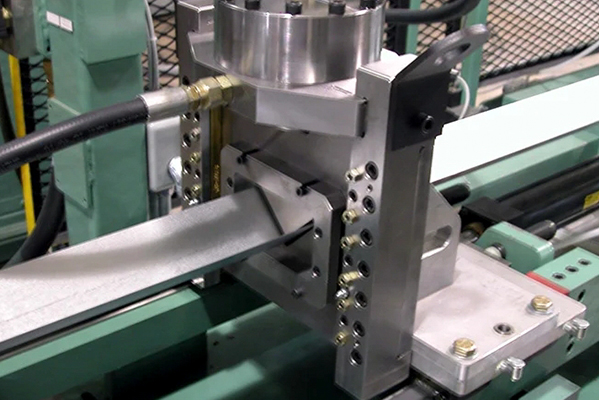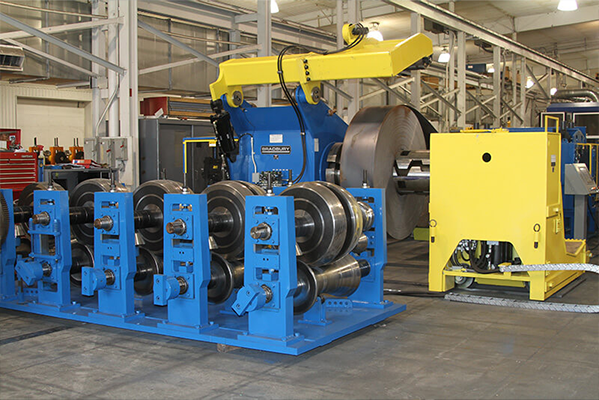Navigation Menu
Contact Us
- Email:
- info@wxavatar.com
- Address:
- Yurong Village, Yuqi Street, Huishan District, Wuxi, China.
Release Date:Apr 03, 2025 Visit:48 Source:Roll Forming Machine Factory
Roll forming machines are versatile manufacturing tools used to shape metal sheets or coils into desired profiles with consistent cross-sections. This process is highly efficient, cost-effective, and suitable for high-volume production. Roll forming is widely used across various industries due to its ability to produce complex shapes with tight tolerances while minimizing material waste. This article explores the key applications of roll forming machines in different sectors.
1. Construction Industry
One of the most significant applications of roll forming is in the construction sector. Roll-formed metal profiles are used in:
Roofing and Cladding – Metal panels for roofs and walls are commonly produced using roll forming, offering durability and weather resistance.
Steel Framing – Light gauge steel (LGS) frames for buildings, including studs, tracks, and joists, are manufactured using roll forming.
Gutters and Downspouts – Custom-shaped gutters and drainage systems are efficiently produced with roll forming.
Composite Panels – Insulated metal panels (IMPs) used in modern construction are made using roll forming techniques.

2. Automotive Industry
Roll forming plays a crucial role in automotive manufacturing, where precision and strength are essential. Applications include:
Chassis and Frame Components – Structural parts like side rails and cross members are often roll-formed for consistency and strength.
Door Beams and Bumpers – High-strength steel profiles for safety components are produced using roll forming.
Exhaust Systems – Certain exhaust pipes and heat shields are manufactured using roll forming for precise dimensions.
3. HVAC and Ductwork
Heating, ventilation, and air conditioning (HVAC) systems rely on roll-formed components such as:
Ductwork and Fittings – Metal ducts, connectors, and vents are efficiently shaped using roll forming.
Ventilation Channels – Custom profiles for air handling units are produced with high precision.
4. Appliances and Electronics
Many household and industrial appliances use roll-formed parts, including:
Refrigerator and Oven Panels – Metal casings and structural supports are often roll-formed.
Electrical Enclosures – Control boxes, server racks, and cable trays are manufactured using roll forming for uniformity.
5. Solar Panel and Renewable Energy Systems
The renewable energy sector benefits from roll forming in:
Solar Panel Frames – Aluminum frames for photovoltaic panels are produced using roll forming for lightweight yet sturdy structures.
Mounting Systems – Solar racking and support structures are often roll-formed for durability and ease of installation.
6. Furniture and Storage Solutions
Roll forming is used in the production of:
Metal Shelving and Racking – Warehouse storage systems and retail displays often use roll-formed beams and supports.
Office Partitions – Modular office furniture components are manufactured using roll forming for consistency.
7. Transportation and Aerospace
Beyond automotive, roll forming is used in:
Railway Components – Train body panels, seat tracks, and structural parts are roll-formed for strength and precision.
Aircraft Interior Parts – Certain lightweight aluminum components in aircraft cabins are produced using roll forming.

Conclusion
Roll forming machines are indispensable in modern manufacturing, offering high efficiency, precision, and versatility across multiple industries. From construction and automotive to renewable energy and appliances, roll-formed metal profiles provide durable, cost-effective solutions for a wide range of applications. As technology advances, roll forming continues to evolve, enabling even more complex and lightweight designs for future industrial needs.